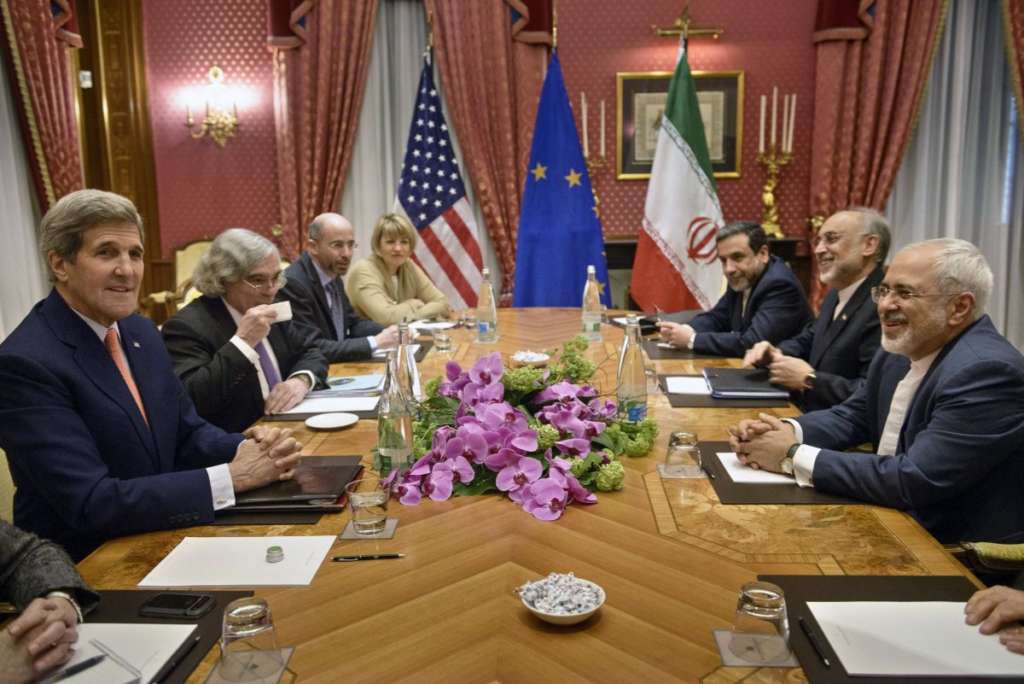We can sense fear in statements made by Iranian officials and most recently President Hassan Rouhani who warned against the consequences of the big scheme’s collapse – the reconciliation agreement with the West based on the nuclear deal signed during the term of former US President Barack Obama.
The Congress shocked the Iranian government when it reinstated a number of economic sanctions on Iran, and US President Donald Trump insisted on his stance that the nuclear agreement serves Iran more than the US, threatening to abolish it.
Countries of the European Union (EU) are keen to preserve the agreement, which they believe it ushered in a new phase with the Iranian regime. Since signing it, they rushed to seal huge trade deals with Tehran, a move that was previously not possible because the US government would have put any European company that dealt with Iran on the blacklist.
Arab states, especially Gulf countries, were the most provoked by this agreement. They were neither against sealing a deal that eradicates the Iranian nuclear danger nor against dealing commercially with Iran but objected over its high cost – extending Iran’s powers via fighting in Syria, Yemen and Iraq and threatening other Arab states.
In case Iran considered that imposing sanctions abolishes the nuclear deal then it will resume uranium enrichment, renewing tension. Iran offers the West two options: its nuclear project that will threaten the West and Israel in the future, or being allowed to have hegemony over the region.
Tehran used the second option as a weapon to blackmail the West: Obama’s administration struck with it a deal that only aims at halting its nuclear program, allowing it to enjoy its powers in several areas, including those that the US considers as interest zones such as the Gulf, Iraq, Afghanistan and Pakistan.
Yet, Iran’s commitment to ceasing the nuclear project is a significant progress that makes Iran worthy of the removal of economic and commercial sanctions. But Obama’s administration went so far in its concessions and allowed Tehran to wage wars, for the first time and in a direct manner, even in states not lying on its border such as Syria and Yemen.
The nuclear agreement is partially responsible for the region’s chaos.
There are more than 50,000 extremists fighting in Syria – directed by the Islamic Revolutionary Guard Corps (IRGC) and brought in from various countries at the time when the international community was endeavoring to get rid of extremist groups such as ISIS.
Because the nuclear agreement was negotiated discreetly between the Obama and Rouhani teams, the region hasn’t been aware of its details until recently – the Obama administration left behind it a dangerous mine. Iran has become more aggressive after signing the agreement, this is evident.
The deal might succeed in disrupting the nuclear project for another decade but it has fueled a more dangerous war in the Middle East and posed an unprecedented level of threat to regimes since the revolution in Iran in 1979. It also reinforced extremists in Tehran.
The new Iranian threats against the US economic sanctions must be taken seriously because they trigger Iran’s way of imposing what it wants via violence and chaos. But the US relapse in Syria represents a huge tactical mistake because Syria is where Iran can be besieged and obliged to cooperate regionally and internationally.
There is a contradiction here because Washington is escalating with Iran on the nuclear level and allowing it to operate freely on the Syrian front.
